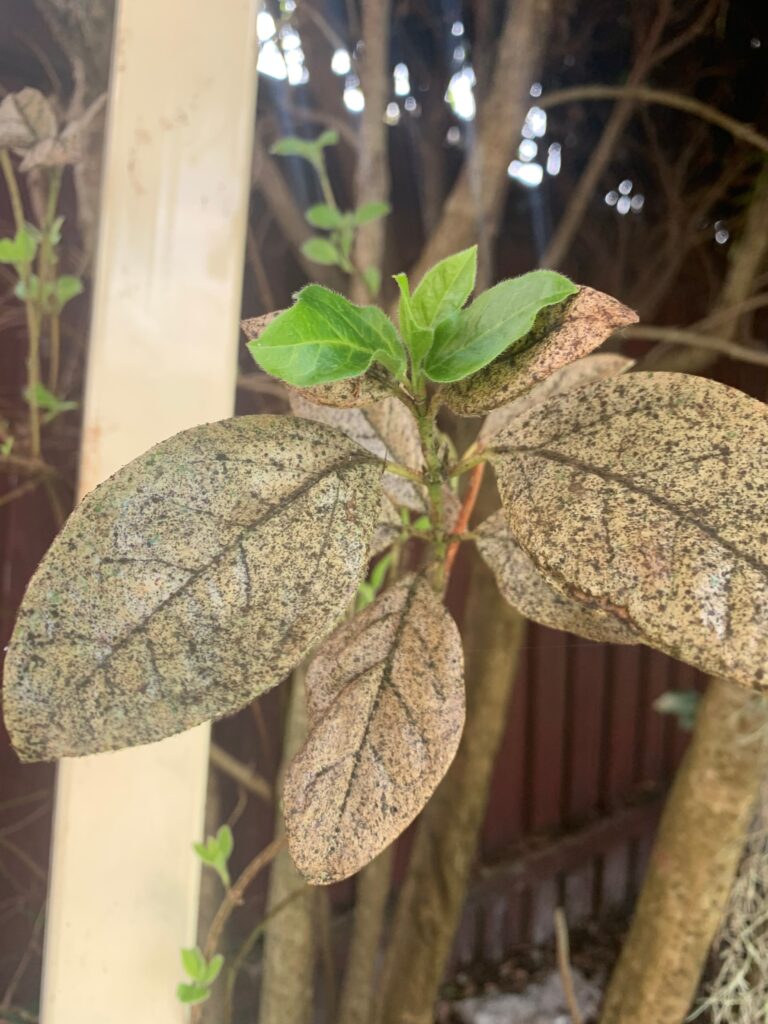How to Save a Viburnum tinus Affected by Mites and Pests

Viburnum tinus is a popular evergreen shrub in many UK gardens, valued for its glossy leaves and clusters of winter flowers. However, in recent years it has become increasingly prone to pests and stress due to the changing climate.
One of the most common problems now seen on Viburnum tinus is red spider mite (or similar mites). Traditionally a pest found inside greenhouses, these mites are now thriving outdoors too, feeding on the leaves and causing decline. Viburnum tinus is particularly susceptible, and without intervention, infestations can weaken the shrub.
It’s also worth keeping an eye out for vine weevil damage. Vine weevil grubs attack roots, but the adults leave tell-tale notches around the edges of leaves. If you notice these characteristic chunks missing, your Viburnum may be suffering from both mites and vine weevil. You can see a useful picture guide in our article on vine weevil damage, identification, causes, and control.
Finally, nutrient deficiencies—again linked to a shifting climate—may also make Viburnum more vulnerable to pests. The good news is that with some care, most Viburnum tinus plants can recover strongly.
Step-by-Step Recovery Plan
1. Pruning
Remove any badly affected areas, especially stems or branches with no green growth. Thinning the plant helps air circulation and encourages healthier regrowth.
2. Washing
Mix around 2 gallons of water with 20 drops of washing-up liquid, then pour it over the plant using a watering can with a fine rose. This helps discourage spider mites and washes away sooty mould forming over winter.
3. Natural Predators
For a more eco-friendly long-term approach, consider introducing natural predators that feed on red spider mites. Options include:
- Ladybirds (ladybugs) – both adults and larvae eat mites and aphids.
- Lacewings – their larvae are voracious predators of mites, thrips and aphids.
- Predatory mites (such as Phytoseiulus persimilis) – highly effective against red spider mite infestations.
These can often be purchased from specialist suppliers in spring and released around your Viburnum to help restore balance naturally.
4. Feeding
Feed every two weeks with liquid tomato food (high in potash) until the end of October. This strengthens cell walls and encourages healthy new growth. Stop over winter, then resume fortnightly feeding in March as the weather warms.
5. Regrowth
In spring, expect to see fresh shoots from both the base and stems. Once the new growth has established, prune back more of the old damaged wood. By summer, the shrub should look fuller and healthier again.
6. Companion Planting
Next spring, sow calendula seeds around the base of your Viburnum. Calendula acts as a useful companion plant, helping to deter pests naturally and improve the overall health of your shrub
Climate change is creating new challenges for gardeners, with pests like red spider mite now thriving outdoors. But with the right care—pruning, feeding, washing, biological controls, and companion planting—your Viburnum tinus can bounce back and continue to be a strong feature in your garden.
GardenAdvice AI agent answering your gardening questions
FAQ




